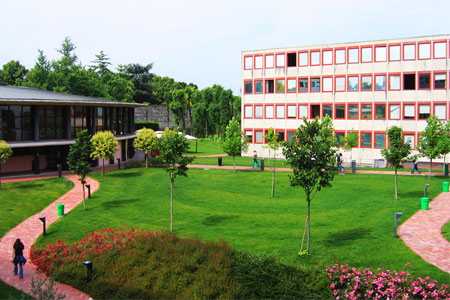Learning outcomes
This course aims to provide a rationale and technical skills in various fields of digital textuality. It presents theoretical framework and methods of Digital humanities with an international perspective. This course is divided into two main parts. The first is dedicated to the creation of a digital scholarly edition and its different phases. The second is focused on methodologies and tools for the computational analysis of literary texts.
The course will be given ONLINE only, in live streaming. Video-recordings of the lectures will be provided on the University e-Learning platform (Moodle).
Introduction to Digital Humanities
Introduction to Computer Science: Information Theory, Algorithms and Languages, Computer architecture
Internet & Web
Web page creation: HTML & CSS
XML Metalanguage
Digital Humanities and Philology: Digital Scholarly Edition [Dr. Anna Cappellotto]
TEI and text encoding
OCR: Optical Character Recognition [Dr. Stefano Bazzaco]
RegEx: Regular Expressions and their usage
Natural Language Processing
Distant reading: Introduction and usage of Voyant
Sentiment Analysis for Distant Reading [Dr. Simone Rebora]
Stylometry [Dr. Simone Rebora]
Materials and resources will be given out during the course to support the lessons, and will be uploaded on the course's Moodle page.
In addition to the suggested textbook, the following resources are recommended as supplementary materials:
- Topic: Digital Humanities and Philology: Digital Scholarly Edition
Patrick Sahle, “What is a Scholarly Digital Edition?”, in E. Pierazzo & M. Driscoll (eds), Digital Scholarly Editing: Theories and Practices, Open Book Publishers 2016, pp. 19-40
URL: https://www.openbookpublishers.com/htmlreader/978-1-78374-238-7/ch2.xhtml
- Topic: TEI and text encoding
Open access video course "Digital Scholarly Editions" on the #dariahTeach teaching and training platform
URL: https://teach.dariah.eu/course/view.php?id=32
- Topic: OCR: Optical Character Recognition
David A. Smith, Ryan Cordell, A Research Agenda for Historical and Multilingual Optical Character Recognition, NULab – Northeastern University, 2018
URL: https://repository.library.northeastern.edu/downloads/neu:m043p093w?datastream_id=content
- Topic: Topic modelling & Stylometry
Fabio Ciotti. 2017. “Modelli e metodi computazionali per la critica letteraria: lo stato dell’arte.” In B. Alfonzetti, T. Cancro, V. Di Iasio, E. Pietrobon (a cura di). L’Italianistica oggi: ricerca e didattica. Roma: Adi editore, pp. 1-11.
URL: http://www.italianisti.it/upload/userfiles/files/Ciotti.pdf
For those interested in further exploring the topics of the course:
INFORMATICA UMANISTICA 2/ED
Marco Lazzari
McGraw-Hill, 2014
ISBN: 9788838668555
https://univr.primo.exlibrisgroup.com/discovery/fulldisplay?docid=alma990003784900205791&context=L&vid=39UVR_INST:39UVR_VU1&search_scope=Aleph_SP&tab=Aleph_slot&lang=it
Attendance and student contribution to class is strongly encouraged.
There is no difference in the program, materials and examination between attending and non-attending students
The exam will be written, consisting mainly of multiple choice questions (with at most one / two open-ended questions). It is administered in computerised form (in a computer-equipped room or online). The online mode is however guaranteed for all students who request it in the 2020/21 academic year.







